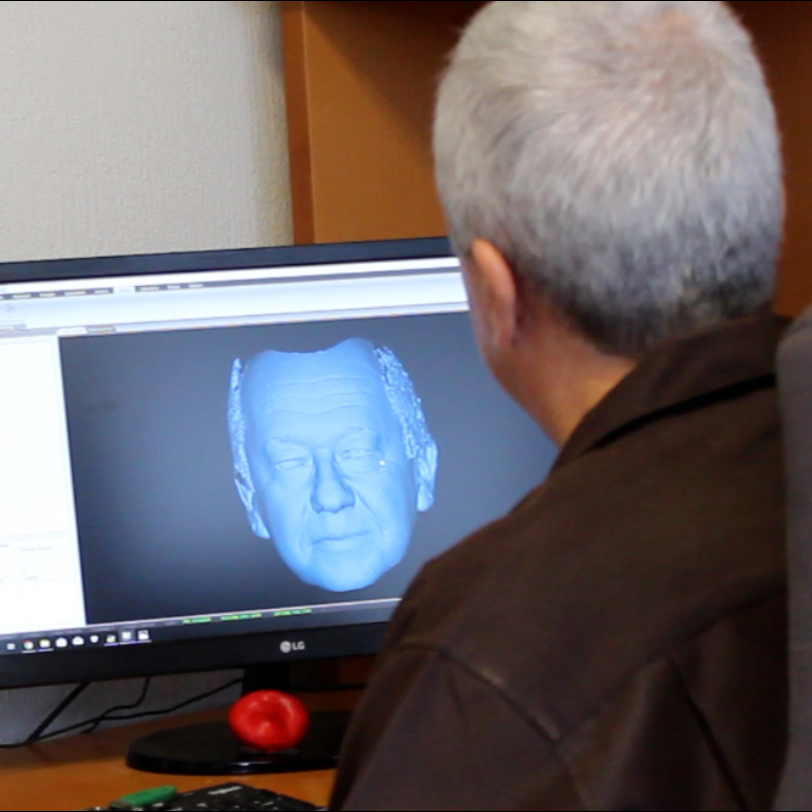Fernando Mendoza Santoyo
Centro de Investigaciones en Optica AC, MexicoFor outstanding leadership in undergraduate and graduate optics education in Mexico and important worldwide contributions in optical metrology.

Fernando Mendoza Santoyo loves his profession, and after more than 40 years working in optical metrology, he says he would choose optics all over again. Since middle school, he has been keen on physics and mathematics. His high school physics teacher noted the curiosity and began advising Fernando and a select group of other students. These chosen five students learned "real physics and mathematics," a much more rigorous curriculum than the rest of the class. An interest in science runs deep in Fernando's family—his father and grandfather were and are noted physicians in Mexico. As he was preparing for college, his father asked whether Fernando would follow in the family line to pursue medicine. Fernando responded, "We have enough doctors in the house!" and confidently chose physics.
Growing up, Fernando observed two historic events that shaped his path toward optics. First, he clearly remembers the lunar landing, which was pivotal for many young people then. Second and more related to optics, he also remembers the invention of the laser. During his undergraduate years, he shares that the laser was almost like science fiction to him. In his final year of study, he had the opportunity to work with his professor's nitrogen laser, bringing the technology into the real world for Fernando. This work enabled him to travel to the International Centre for Theoretical Physics (ICTP) in Trieste, Italy, for a three-month course taught by leaders in the field. This experience solidified his choice to pursue optics. From there, he was offered an opportunity to complete a master's degree at Imperial College London, UK and shortly after finishing, another opportunity came about to do his PhD at Loughborough University of Technology, UK. These experiences led him to holography and, ultimately, optical metrology.
Fernando was able to experience academia and industry simultaneously following his PhD work. While in the UK, several companies, including British Aerospace and Rolls-Royce Motorcars, became interested in his research. Though employed by the university, these companies also hired Fernando to conduct research for them. He observed many differences between the two environments, but the most apparent was the pace of research. He shares, "Back then, industry wanted to have the results yesterday." Typically, researchers had more freedom to determine their focus and timeline in academic settings, but industry preferred much more accelerated and defined projects. He has observed today that the two areas are more aligned with their expectations for researchers. Fernando enjoyed the challenge and pursued similar arrangements with industrial colleagues in addition to his academic work upon returning to Mexico. These collaborations took more work to arrange in Mexico than in the UK, but proved to be just as rewarding.
Optical metrology is a nearly all-encompassing field, according to Fernando. He shares, "I think that many researchers working in optics and photonics now are doing optical metrology every day." After all, optical metrology encompasses all kinds of measurements using optics and photonics. With such a broad scope, Fernando is excited about the possibilities, particularly the application to the nano-world. Already, there are established devices and industries dedicated to measuring the macro-world with optics and photonics, and there are many opportunities to explore things much smaller. Some of the researchers in his group are currently using digital holographic microscopy to investigate the morphology of cells. The more research done in this area, Fernando predicts, will lead to many applications to help tackle diseases using optics.
Fernando has long been an Optica member. His first two papers were published in Optica journals, and he has continued to participate in meetings, publications, and the many networking opportunities provided by Optica. He has also served the society on committees and boards and enjoys giving back. He shares that Optica "opens the door, and I am very grateful to the society." Looking to the future, he emphasizes the essential role societies like Optica have in encouraging young people to pursue science and technology. He comments, "We need people who are enthusiastic, motivated, and keen on science. Societies like Optica are doing a fantastic job at promoting optics and photonics. I think that's going to be good for the world."
Photo provided by: Fernando Mendoza Santoyo
Profile written by Samantha Hornback
